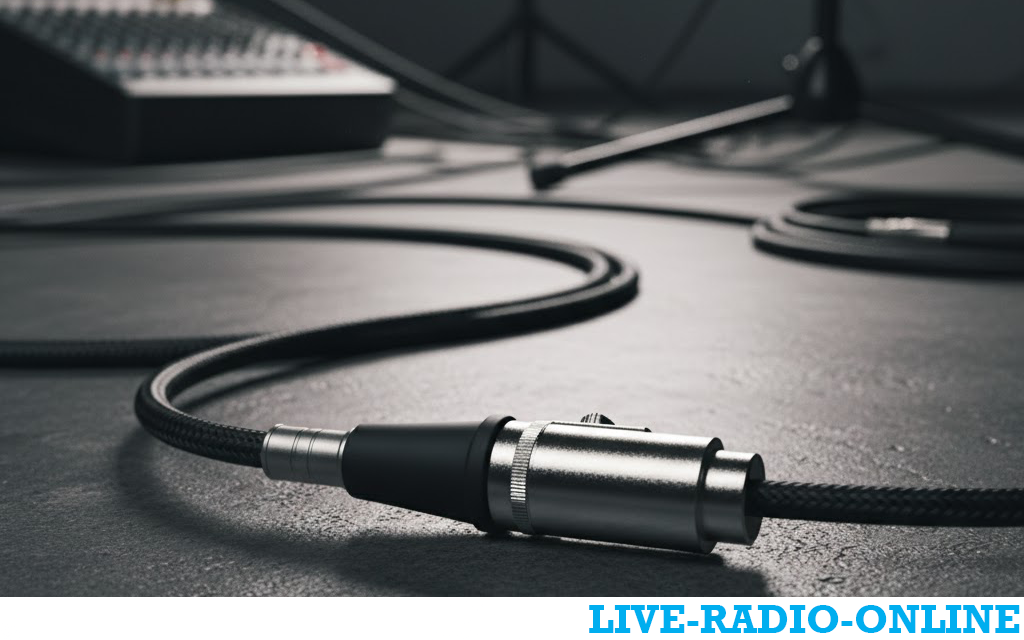
The Short Answer
An XLR connector is a professional-grade, multi-pin electrical connector most commonly used in audio, video, and stage lighting equipment. Its classic design features a circular metal barrel with 3 to 7 pins (most commonly 3 pins) and a secure locking mechanism.
The Detailed Breakdown
1. The Name: What Does "XLR" Stand For?
The acronym comes from its original manufacturer, Cannon Electric (which later became part of ITT Cannon). The "X" series was one of their product lines. The "L" stands for the Latch (the locking mechanism), and the "R" stands for the synthetic Rubber compound used in the early versions for the connector's body.
2. Key Physical Features
-
Robust and Balanced: XLR connectors are designed for professional, rugged use. The most significant feature is that they carry a balanced audio signal. This uses three wires (in a 3-pin setup):
-
Pin 1: Ground/Shield
-
Pin 2: Positive/Hot Signal (+)
-
Pin 3: Negative/Cold Signal (-)
-
-
Locking Mechanism: The connector has a small, sprung latch that clicks into place, preventing it from being accidentally unplugged—a critical feature on a dark stage or during a live event.
-
Gender: XLR connectors come in male and female versions, following a standard convention:
-
Male XLR (with pins): Typically used on the output or source end of a cable (e.g., coming from a microphone).
-
Female XLR (with pin sockets): Typically used on the input or destination end of a cable (e.g., going into a mixer, amplifier, or the opposite end of a cable).
-
3. Primary Uses and Applications
-
Professional Audio: This is its most famous application.
-
Microphones: Almost all professional microphones (dynamic and condenser) use a 3-pin XLR output.
-
Mixing Consoles, Amplifiers, and Signal Processors: XLR is the standard connector for inputs and outputs on professional audio gear.
-
-
Balanced Audio Interconnects: Any situation where you need to run a long cable without picking up noise (like from a stage to a sound booth) is ideal for XLR.
-
DMX Lighting Control: A 5-pin version of the XLR is the standard connector for DMX512, the digital protocol used to control stage and theatrical lighting.
-
Intercom Systems: Used in broadcast and theater for belt packs and base stations.
-
Power (Rarely): Some specialized equipment, like certain professional lighting, uses 4-pin XLR connectors to carry DC power.
4. Why is it the Professional Standard? (The Balanced Audio Advantage)
The 3-pin XLR's primary advantage is its ability to carry a balanced audio signal. Here’s why that matters:
-
Noise Rejection: The audio signal is sent simultaneously down both Pin 2 (positive) and Pin 3 (negative), but the signal on Pin 3 is inverted (out of phase).
-
Interference: As the cable runs, both wires pick up the same electromagnetic interference (hum from power cables, radio frequencies, etc.).
-
Cancellation: At the receiving device (like a mixer), the negative signal is flipped back to its original phase. The interference, however, is now inverted on one channel. When combined, the original audio signals add together, but the identical, out-of-phase interference cancels itself out.
This process, called Common-Mode Rejection, allows XLR cables to run for hundreds of feet without any audible noise or signal degradation, making it indispensable in professional settings.
5. Common Variations
-
3-Pin XLR: The absolute standard for analog audio.
-
4-Pin XLR: Sometimes used for DC power, or for professional video camera headsets with integrated comms.
-
5-Pin XLR: The standard for DMX lighting control. It can also be used for stereo audio (e.g., left channel on one pair, right on another) or "stereo" microphones.
-
6-Pin and 7-Pin XLR: Less common, used for specialized applications like dual-element microphone powering or antique tube microphone power supplies.
XLR vs. Other Common Connectors
-
XLR vs. 1/4" (6.35mm) TS/TRS:
-
1/4" TS (Tip-Sleeve) is unbalanced and used for instrument cables (guitar, bass).
-
1/4" TRS (Tip-Ring-Sleeve) can be balanced, similar to XLR, and is often used for headphone outputs or insert cables on mixers. XLR is generally more robust and has a superior locking mechanism.
-
-
XLR vs. 3.5mm (1/8") Mini-Jack:
-
3.5mm jacks are consumer-grade, unbalanced, and much less robust. They are used for headphones, computer speakers, and consumer microphones. There is no comparison in terms of professional audio quality and durability.
-
Summary
In essence, the XLR connector is the workhorse of the professional audio and live event industry. Its robust physical design, secure locking mechanism, and ability to transmit clean, noise-free balanced audio over long distances have made it an enduring and trusted standard for decades.


